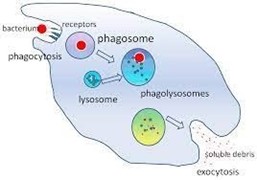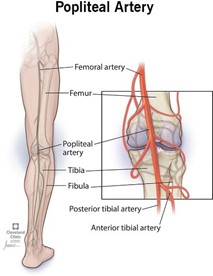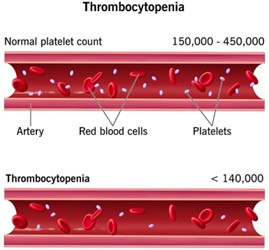In white blood cells, what contributes to phagocytes?
Lysosomes
Vacuoles
Endoplasmic reticulum
Golgi apparatus
The Correct Answer is A
Lysosomes contribute to phagocytosis in white blood cells by fusing with the phagosome, which is the membrane-bound vesicle that engulfs the foreign particle or pathogen during phagocytosis. The lysosomes contain hydrolytic enzymes that can break down the engulfed material, thereby helping to destroy the invading pathogen. Additionally, lysosomes can also release reactive oxygen species and other antimicrobial molecules that further aid in the destruction of the pathogen.
Vacuoles, endoplasmic reticulum, and Golgi apparatus do not directly contribute to phagocytosis in white blood cells. Vacuoles are used for storage in cells, while the endoplasmic reticulum and Golgi apparatus are involved in protein synthesis and processing.

Nursing Test Bank
Naxlex Comprehensive Predictor Exams
Related Questions
Correct Answer is C
Explanation
The popliteal artery is located behind the knee and is one of the major arteries that supplies blood to the leg and foot. Palpating the pulse in this artery can be done by pressing firmly on the area behind the knee, just below the crease. It is important to note that palpating the pulse in this area can be more difficult than other pulse points, as the artery is deep and surrounded by other structures such as muscle and bone.

Correct Answer is A
Explanation
Also known as platelets, are cell fragments in the blood that play a crucial role in blood clotting or coagulation. When a blood vessel is injured, thrombocytes are activated and clump together to form a platelet plug that stops the bleeding. They also release substances that promote blood clotting and help to repair the damaged blood vessel. Therefore, the function of thrombocytes is important in preventing excessive bleeding and promoting wound healing. Options a, c, and d are incorrect because they do not describe the function of thrombocytes.

Whether you are a student looking to ace your exams or a practicing nurse seeking to enhance your expertise , our nursing education contents will empower you with the confidence and competence to make a difference in the lives of patients and become a respected leader in the healthcare field.
Visit Naxlex, invest in your future and unlock endless possibilities with our unparalleled nursing education contents today
Report Wrong Answer on the Current Question
Do you disagree with the answer? If yes, what is your expected answer? Explain.
Kindly be descriptive with the issue you are facing.
